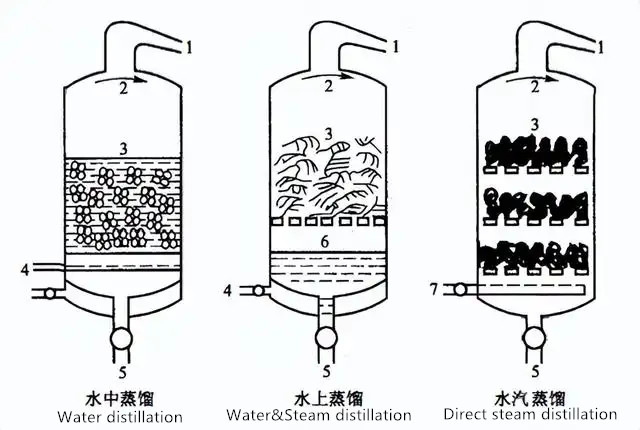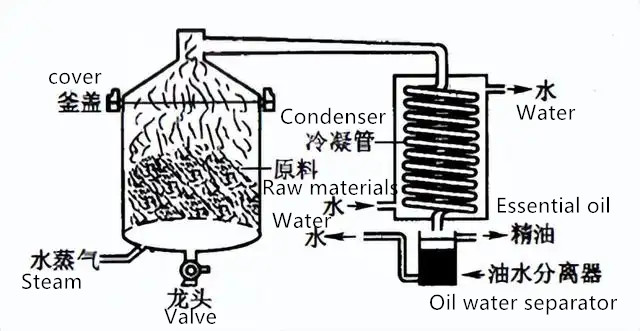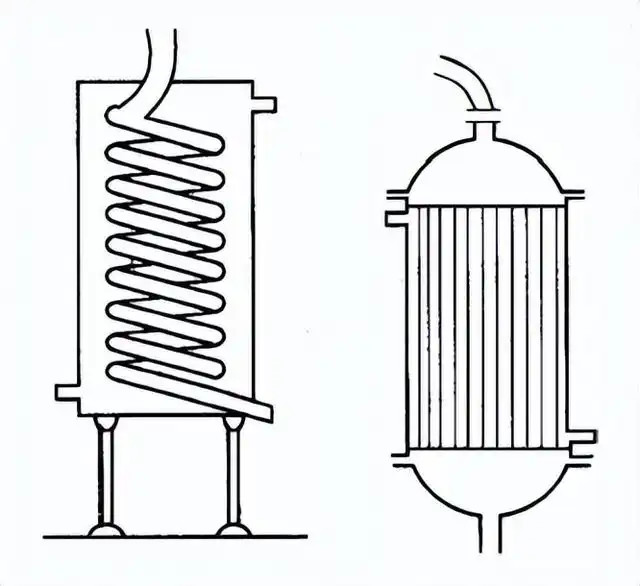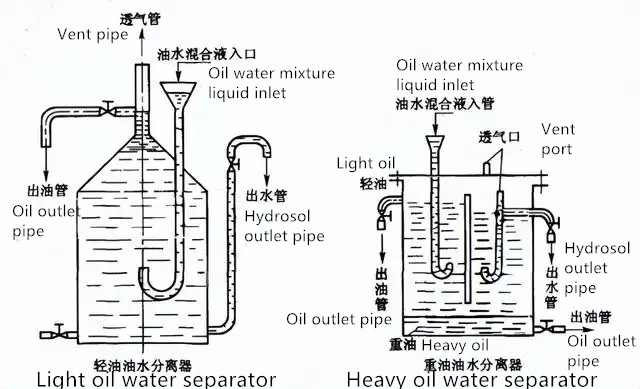1. Types and sources of natural spices
Natural flavors mainly refer to plant-based flavors, which generally come from plant essential oils such as plant branches, leaves, rhizomes, fruits, bark, buds, resins, etc. Aromatic plants all contain essential oils, and there are a huge number of species. However, there are about 516-518 species actually used in spices or spice synthesis raw materials, belonging to 57 plant families. There are about 135 kinds of plant spices in my country.
Approximately 60,000 tons of natural aromatic oils are produced around the world every year, of which 34,000 tons are used in food and the rest are used in cosmetics and other industries. The 10 best-selling natural aromatic oils are sweet orange oil (Citrussinensis) and lemon oil (Citruslimonum). , Citrus aurantifolia, Citrusreticulate, Menthapiperita, Mentha spicata, Menthaarvensis, Eugeniacaryophyllata, Eucalyptus oil (Eucalyptus globulus), Litsea cubeba oil (Litseacubeba), etc.
Animal spices come from the secretions or stones of animals such as castoreum, musk, large and small civets, scented whales, and dragonflies. There are 11 kinds of animal spices in the world and 6 in my country. They are all precious fixatives, and precious fragrance formulas (such as those used in high-end cosmetics such as high-end perfumes) almost all contain animal fragrances.
2. Extraction technology of natural spices
There are many extraction methods for natural flavors, generally using steam distillation, pressing, solvent extraction, adsorption, precision fractionation and other methods. The specific method to use depends on the nature of the raw materials, the purpose of the spices, etc. In order to reproduce the aroma of natural flowers, fruits and plants, the active ingredients must be separated by the most appropriate method. The supercritical CO2 extraction technology and the use of falling film high-efficiency distillation towers developed in recent years have begun to show their talents in the development of natural flavors.
Natural spices produced by steam distillation and pressing are usually aromatic volatile oils, collectively referred to as essential oils. Products produced by pressing are also called pressed oils; products produced by supercritical extraction generally also belong to essential oils. The leaching method uses volatile solvents to extract aromatic plants. After solvent removal (recycling), the product usually becomes a semi-solid paste, so it is called extract; some aromatic plants (such as vanilla) and animal secretions After the substance is extracted with ethanol solution, the active ingredients are dissolved in it and become a clear solution. This solution is called a tincture.
Plant-based natural spices prepared by non-volatile solvent absorption method are generally miscible in lipid non-volatile solvents, so they are called balsam. Dissolve the extract or balsam with high-purity ethanol (alcohol), filter out solid impurities such as vegetable wax, and evaporate the ethanol to obtain a concentrate called absolute oil.
The steam distillation method is introduced below:
steam distillation
After collecting the plants, put them into a distillation kettle, add water vapor and heat them to evaporate the water and essential oil components (boiling point 150~300°C). After condensation, the essential oils are separated. Most essential oils are insoluble in water.
There are three forms of essential oils produced by steam distillation: water distillation (hydrodistillation), water and steam distillation, direct steam distillation. These three distillation methods have their own advantages and are suitable for various situations. The heating temperature for water distillation is generally around 95°C, which makes it difficult for high-boiling components in plant raw materials to be steamed out; in addition, scorching is easy to occur in direct heating. Water&steam distillation and direct steam distillation are not suitable for easy caking and fine powdery raw materials, but the essential oils produced by these two distillation methods are of better quality. Using steam distillation, the process operation can be adjusted to changes in temperature and pressure, and the quality of the essential oil produced is also the best.

The steam distillation production equipment mainly consists of three parts: a distiller, a condenser, and an oil-water separator.

1. Steam distillation equipment
Steam distillation equipment can generally be divided into three types: simple single pot distillation, pressurized series distillation and continuous distillation.
(1) Simple single-pot distillation equipment.
It can be divided into two situations, namely single pot fixed type and single pot pouring type. The single-pot fixed steam distillation equipment is suitable for three distillation methods: water distillation, water distillation and water vapor distillation. It can use two heating methods: direct open flame and water vapor. Because it has the characteristics of simple structure, convenient production, easy operation, and easy movement, it is widely used. For example, water distillation is used to process roses, white orchids, and orange blossoms, and water distillation is used to process mint, spearmint, lavender, geranium, and litsea cubeba, etc.

The structure of the single-pot pouring steam distillation equipment is similar to the fixed type. Only a rotating shaft is added in the middle of the distillation barrel. After the distillation is completed, the transmission device is used to rotate the steamer 180 degrees to dump the residue in the steamer into the transport vehicle. This reduces labor intensity and improves equipment utilization. This equipment is suitable for processing lemongrass, lavender, patchouli, fragrant perilla, orchid flowers and leaves by water distillation.
(2) Pressurized series distillation equipment
In order to improve production efficiency, 2 to 4 pressurized distillation pots are sometimes used in series in industrial production. Pressurized series distillation has the advantages of saving energy, saving equipment investment, high oil yield, good product quality, relatively complete product aroma, and reduced acid value. This method is particularly suitable for spice plants that contain ingredients with high boiling points and are not susceptible to deterioration under high temperature and pressure (such as vetiver, lemongrass, spikenard, orchids, etc.). Taking vetiver as an example, atmospheric pressure steam distillation is used, the distillation time is as long as 72 hours, and the oil yield is about 2%. If pressurized steam distillation is used, when the pressure is 392kPa, the distillation time can be shortened to 20 hours, and the oil yield is increased to 4%. If three pressurized distillation equipment are connected in series, the production efficiency will be greatly improved.
(3) Continuous distillation equipment
Continuous distillation to produce plant essential oils generally uses direct steam distillation, with continuous feed in and out. This kind of equipment is characterized by high production efficiency, labor saving, and improved working conditions. This equipment is particularly suitable for distilling varieties that have a large daily processing capacity and are easy to distill, such as lemongrass, lavender, spearmint, basil, geranium, geranium, clove basil, mint, lemongrass, etc.
(4) Condenser
There are three types of condensers currently used in production: coiled tube type, tube type and grid condenser tube. Among them, the coiled tube type is most used. The manufacturing material is preferably aluminum, but galvanized iron can also be used instead.

(5) Oil-water separator
The oil-water separator is also called an oil separator. Its function is to receive the distillate flowing out from the condenser, and then separate the essential oil and water according to the density difference between them. The volume of the oil-water separator is generally about 3% of the distillation pot volume.

Oleoresins Introduction
Stainless Steel Mixing Equipment Application
Plate Centrifuges Application
Contact: Project Manager
Phone: +86-18120438367
Tel: +86-18120438367
Email: info@tycoretech.com
Add: No. 1, Optics Valley Avenue, East Lake New Technology Development Zone, Wuhan, Hubei, China
We chat
